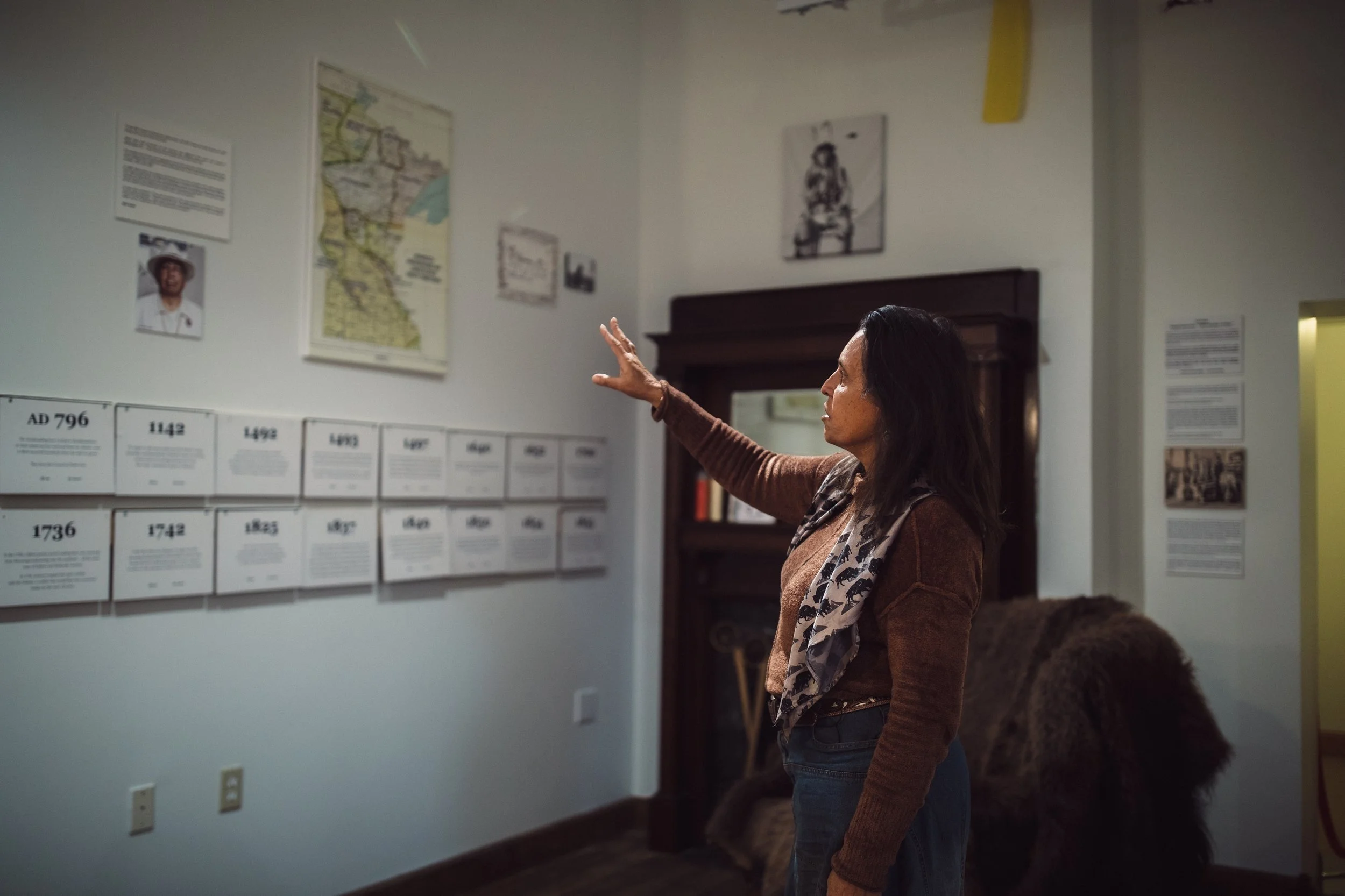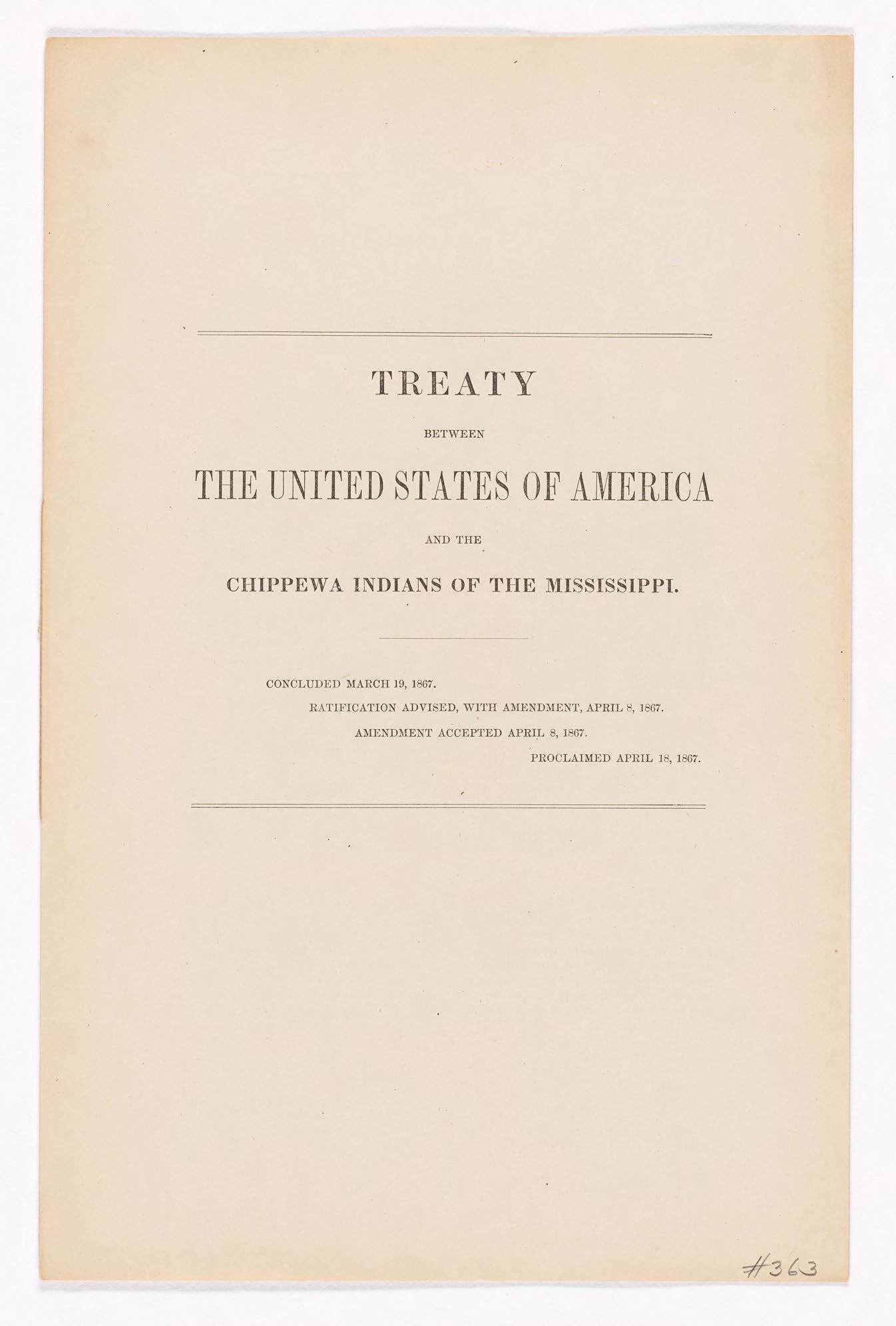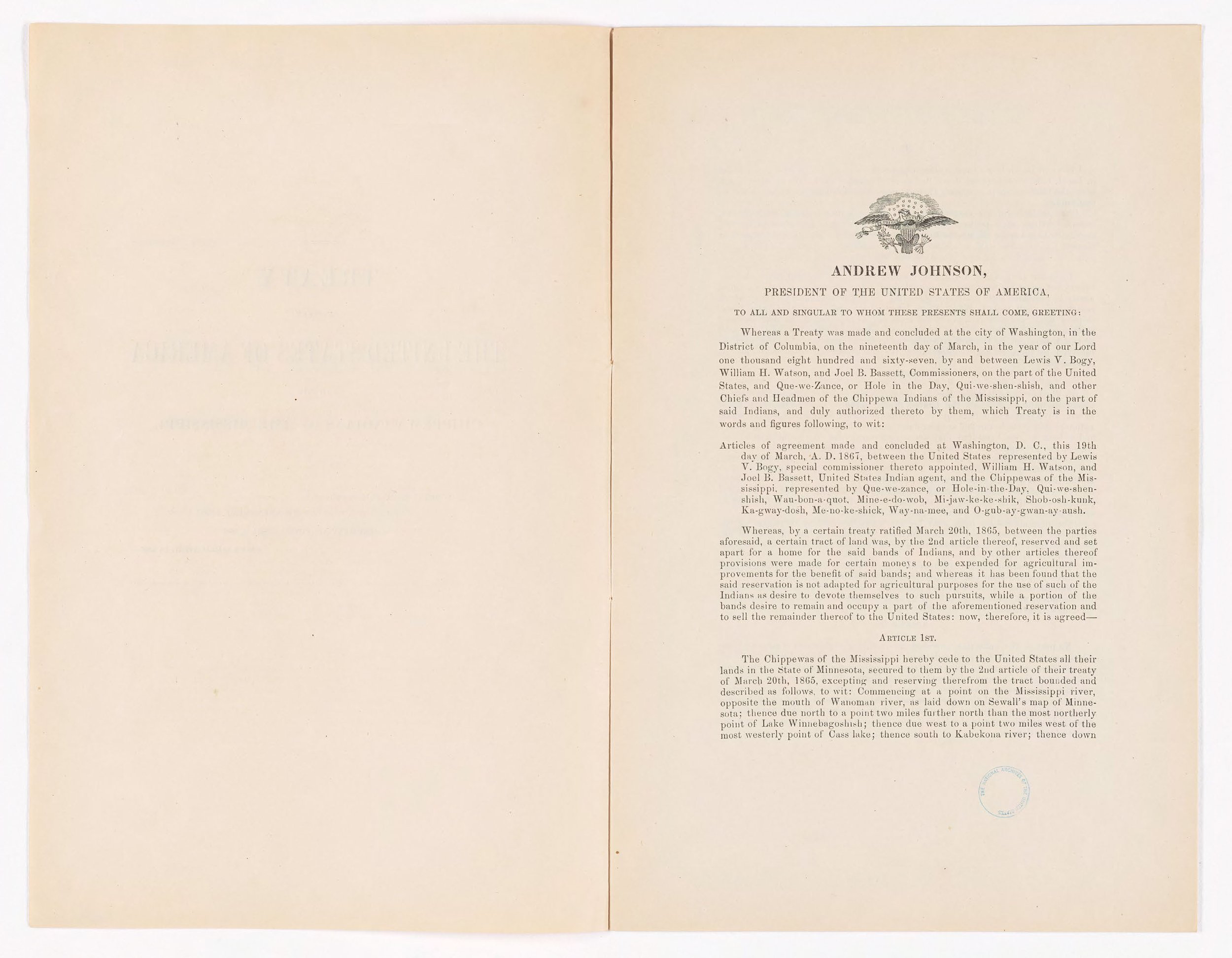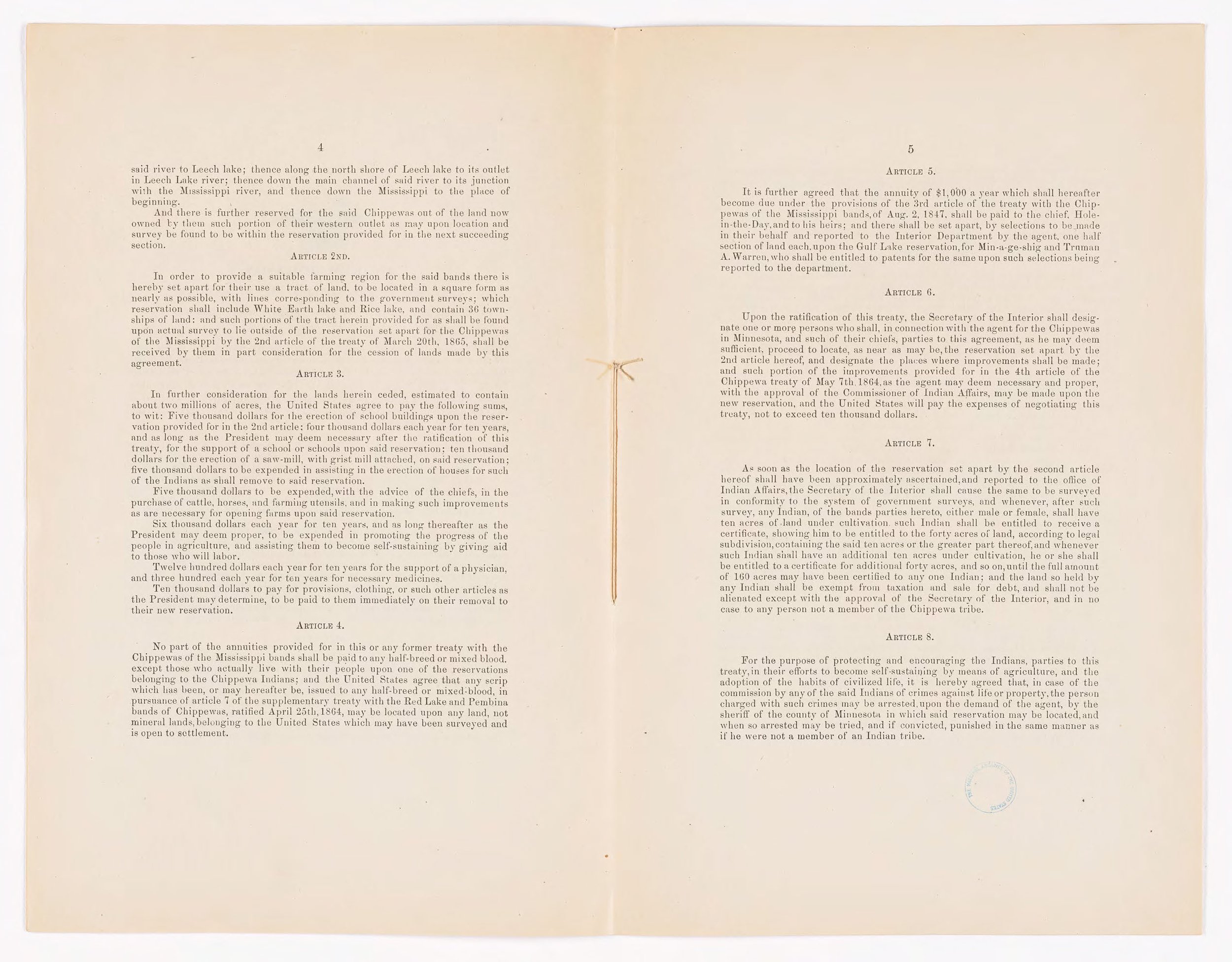Nations should honor agreements by Winona LaDuke
Nations should honor agreements
by Winona LaDuke.
Minnesota Legislature, Sen. Mary Kunesh introduced SF 3480 3480 which would return the 160,000-acre White Earth State Forest to the White Earth band of Anishinaabe. It follows a land return to the Lower Sioux in mid March and represents a way to begin healing the wounds of Minnesota’s past and comply with the law.
The 1867 Treaty was intended to provide a secure homeland for the Anishinaabe people forever. The Treaty was signed by our leaders and by President Andrew Johnson.
Agreements should be honored by nations.
The Treaty provides for many things: The 837,000 acres of land, maples, the wild rice, the 47 lakes, the lifeblood of our people and …
“... the lands so held by any Indian shall be exempt from taxation and sale for debt and shall not be alienated except with approval of the Secretary of Interior and in no case to any person not a member of the Chippewa ...” — Article 7 of the 1867 Treaty.
That is the law of the land.
Nations and political leaders should keep agreements.
That’s how we keep the peace.
That’s not what happened. Land was taken illegally and the United States and Minnesota did not do the right thing for over a century. And now the state is trying to make it right. At the Minnesota Legislature, Sen. Mary Kunesh introduced Sf 3480 which would return the 160,000-acre White Earth State Forest to the White Earth band of Anishinaabe. It follows a land return to the Lower Sioux in mid March and represents a way to begin healing the wounds of Minnesota’s past and comply with the law.
Mahnomen and Becker county lawmakers seemed confused when they testified at the state hearing. Sen. Paul Utke referred to the bill as a “land grab” and David Geray, a Mahnomen County commissioner, talked about being blindsided by the land transfer. “Mahnomen County is entirely within the reservation. We didn’t find out about this until we were down here.”
That’s sort of surprising considering that these are elected officials who should understand the law and history. Here is a bit of history. This land is called Indakiingimin, the very land to which we belong. It is all we have left, Iskongigen, Reservation, leftovers.
The White Earth Reservation was reserved under Treaty, to protect our vast pine forests, 47 lakes, maple trees, our wild rice, and our water. For that is the source of our lives.
Our land was coveted. Sen. Knute Nelson secured the passage of what was to be known as the Nelson Act in 1889, not only illegally annexing four townships from the Treaty protected lands, but also violating the Treaty by creating a system to divide the land allotments. That’s how the big pines were cut. Then came Moses Clapp, and Steenerson who attached riders to bills securing access to more land, violating the same Treaty, and creating the place for Mahnomen County. Literally, counties which are located on the White Earth Reservation carved themselves out of the Reservation illegally. Now that’s a land grab.
The Minnesota Indian Affairs Council provides this history:
The Dawes Act of 1887, Nelson Act of 1889 along with the Clapp Act of 1904 and Snyder Act of 1906, enabled the rapid division of the reservation and allotments were given to individuals of 80 acres to head of household and 40 acres each to their children. There were many schemes to defraud individuals and minors from their land. Around the turn of the century much of the original Reservation land was illegally taken from allottee or their heirs through tax forfeit, minor sales, full blood or administrative sales. The timber was sold and cut and much of the land quickly passed into non-Indian ownership.
There are many ways to steal land from Indian people, and most of them happened here on the White Earth Reservation. It was something like “Killers of the Flower Moon” land speculators, lumber companies, and thieves.
Some land is taken with a gun, some is taken by a pen. Three hundred white farmers suddenly became mixed-blood allottees, illegal tax forfeitures of tribal trust land, forced fee patents, minor sales, and more illegal full blood sales, pushed it further. These thefts were the subject of no less than 1,600 lawsuits, but these cases were blocked.
By 1910, the people had been devastated, three-quarters of the allotments had been lost, and the forest was falling. The president sent Warren Moorehead out to investigate. Whole families blinded by trachoma, and land speculators all around, tuberculosis spreading like wildfire as people lived in refugee camps. He found diseases and death everywhere. We were almost wiped out as a people. Moorhead received death threats for telling the truth and returned to Washington. None of that should have happened if nations kept agreements.
The White Earth people were made refugees in our own land. Between 1915 and 1930 most tribal members were forced to move off Reservation. We have been the poorest people in the state of Minnesota since that time.
There have been many lawsuits, but none stopped the theft until the Zay Zah Case in 1977 which was filed by Clearwater County against Zay Zah, or George Aubid. The Minnesota Supreme Court found that Clearwater County had illegally attempted to tax forfeit a tribal allotment.
Finally, someone stopped the land grab.
In 1983, there were only 54,125 acres in tribal hands, and 1,953 under allotment on the Reservation, representing 7% of the Reservation. The largest landowners on the Reservation are the federal state and county governments, holding one third of the Reservation.
What is right and just is the return of lands which were taken in violation of the 1867 Treaty. This bill represents a way toward justice without displacing a single non-Indian landholder, and upholds the Treaty responsibility of the U.S. government.
“We’ve managed these lands long before the inception of any of these counties,” Eugene Sommers, District 1 representative, says. “For them to question our competency in management of these resources is a big slap in the face. History is repeating itself.”
I want to personally invite county commissioners and all to Giiwedinong, the Treaty Rights History and Culture Museum in Park Rapids. Minnesota.
Knowledge of the law is better than ignorance of the law. And understanding history is a good way to begin to heal.
A column by Winona LaDuke published March 23, 2024 - Alexandria Echo Press






